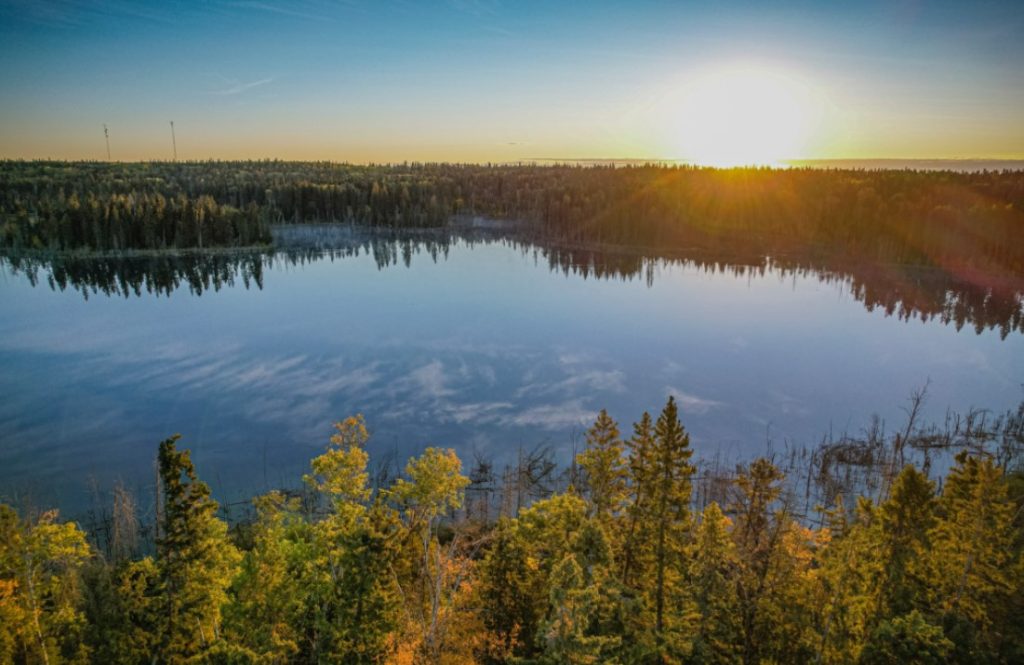Bedford Metals samples up to 462 ppm U3O8 at Ubiquity Lake, Saskatchewan

Bedford Metals Corp. [TSXV: BFM; FWB: O8D; ISIN: CA0762301012] reported results of its recent prospecting program at the Ubiquity Lake uranium project, located on the southern lip of the Athabasca basin, Saskatchewan.
A total of 60 samples were collected and analyzed as part of this program. The samples were analyzed by SRC Geoanalytical Laboratories, an arm’s-length accredited laboratory located in Saskatoon, Sask., and specializing in uranium detection, using inductively coupled plasma mass spectrometry (ICP-MS) analysis.
The results from this exploration program were highly encouraging, with sample assays ranging from zero part per million to 462 ppm triuranium octoxide. Nine samples were collected from target zone 1 (TZ-1), which is located at the dislocation of the southern extent of a 4.6-kilometre, northwest-trending electromagnetic anomaly identified in a 2007 Geotem survey.
The highest assays at TZ-1 were 462, 305 and 191 ppm triuranium octoxide, collected from outcrop. TZ-1 is also concurrent with notable methane and helium anomalies identified through a VNIR (visible near-field infrared) and SWIR (shortwave infrared) satellite investigation conducted by Dr. Neil Pendock (PhD in applied mathematics).
Additionally, several radioactive samples were taken at the newly discovered Warr Lake radioactive zone, located adjacent to a large, north-south-trending fault on the west shore of Warr Lake. The highest assay results from Warr Lake were 200 and 76 ppm triuranium octoxide.
Dr. Peter Born, president of Bedford, commented: “We are very happy with the results from our exploration program at Ubiquity Lake. The confirmation of historical results at TZ-1 and the discovery of a new target at Warr Lake are exciting developments for the project. I would like to thank our exploration team for their hard work, and we look forward to designing our next exploration program, which we plan to initiate soon.”
The company is pleased with the outcome of this program, which not only confirmed historical results at TZ-1 but also identified a new target zone – the Warr Lake radioactive zone – offering further potential for uranium discovery.
The Close Lake uranium project lies on the eastern side of the Athabasca basin, adjoining claims held by Cameco Corp., the largest uranium producer in the world. The claim is approximately 245 hectares and lies within the primary exploration corridor, which hosts the Keys Lake mine, the Cigar Lake mine and the McArthur River mine. Access to the property is done through a network of roads and trails.
The Ubiquity Lake uranium project, covering 1,382 hectares, lies just south of the bottom lip of the Athabasca basin, adjacent to ALX Uranium’s Carpenter Lake project to the east. Situated near the Cable Bay shear zone, parallel to the Virgin River shear zone, which hosts Cameco’s Centennial uranium deposit, the project holds immense potential. Furthermore, it is located 100 km west of Cameco’s past-producing Key Lake uranium mine, underscoring the strategic significance of its location.
The Sheppard Lake uranium project covers an area of approximately 2,250 hectares and adjoins the Ubiquity Lake project to the southeast. The project area is characterized by rocks of the Mudjatik domain, where uranium mineralization is typically basement hosted, situated within shears or faults, and formed through hydrothermal redistributions of dissolved metals and subsequent redox reactions.
